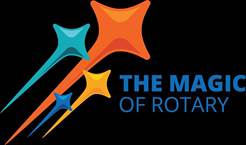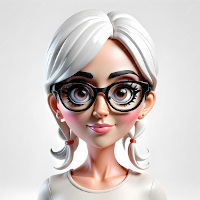|
Rotary International Theme 2024-2025

|
THE ROWEL

Rotary
Club of Durham
|
Rotary
International President:
Stephanie
Urchick
Rotary District 5160 Governor:
Daniel
J. Geraldi
Durham Rotary President: Peggi Whitman
_____________
Editor:
Phil Price
Publisher: Jen
Liu
|
|

|
June 10, 2025
|
Harvest Festival
2025
will
be held on
September
21, 2025

|
|
|
|
|

|
The
Meeting Opening
We met at the Butte
Creek
Country Club.
President Elect Tom
Knowles called
the meeting to order, in Peggi’s absence. She is
delivering Camp Venture students to Camp Venture.
Tom asked Eric
Hoiland to led
the pledge, which he did.
Larry Bradley then
led us in
singing “God Bless America”.
Tom Knowles gave an
invocation
in Rev Jim’s absence.
|
| 2025
Calendar for Durham Rotary |
J
u
n
e
|
1 |
2 |
3
|
4
|
5 |
6 |
7 |
| 8 |
9 |
10
Meeting
Eric Miller, who will talk about garbage
(Mike Crump) |
11 |
12 |
13 |
14 |
15
|
16 |
17
No Meeting |
18 |
19 |
20 |
21 |
| 18 |
19 |
20
No Meeting
|
21 |
22 |
23 |
24 |
| 22 |
23 |
24
Demotion Party at BCCC
(Glenn Pulliam)
|
25 |
26
|
27 |
28 |
| 29 |
30 |
|
|
|
|
|
J
u
l
y
|
|
|
1
No Meeting
|
2 |
3 |
4 |
5 |
| 6 |
7
|
8
Meeting
BCCC - Program TBA
|
9
|
10
|
11 |
12
|
13
|
14
|
15
No Meeting |
16
|
17
|
18
|
19 |
| 20 |
21 |
22
Meeting
BCCC - Program TBA |
23 |
24 |
25 |
26 |
| 27 |
28 |
29
|
30 |
31 |
|
|
|
FUTURE
MEETINGS: Meetings
will be at the location noted, at 6:00 pm.
|
|
June
24th: Glenn Pulliam will host the
Demotion at BCCC.
July
8th: At BCCC
July
22nd: At BCCC
August
5: At BCCC
August
19th: At BCCC
|
|
Reverend
Jim's Memorial
Rev.
Jim’s
memorial service took place on Saturday, May 31, 2025, at
the
Aldersgate United Methodist Church, in Chico. There was standing
room only at
the service and people had of course positive and glowing stories and
memories
to share about Jim Patterson. He will most definitely be missed!

These
flowers were from our club.

Other
Matters
President Elect Tom read a thank you note from Nancy Patterson
for the flowers and attendance at the Memorial Service for Jim.
Steve Plume, Program Chair for the next year, passed around a
signup
sheet for programs this coming year.
An
Article in Forum on Rotary Club of Durham
Community member Rian Farley noticed and contributed the
following article in Forum regarding our club. Thank you
Rian!
Recognitions
John Bohannon was
thankful
that the school bond issue was passed so he gets some new
facilities. He
contributed $100.
Jessica Thorpe had a
birthday
in April, an Anniversary and a daughter graduating. She
contributed $75.
Diana Selland had an
8th
grade graduate and a son playing football at Valley College. She
contributed
$100.
July 4th
was
Imogene’s 22nd Anniversary. She contributed $22.
Eric Hoiland
contributed $156,
but I missed what for.
Mike Crump
contributed $99 for
his birthday.
Lastly, I contributed
$60 for
my trip to Cabo and $20 for my birthday while there.
The
Program
The
program
tonight was presented by Mike Crump. He presented Eric Miller who
has a long
history dealing with garbage in Butte County. Mr. Miller talked
about garbage.


He
gave us the history
over the millennium of how our early ancestors delt with garbage and
other
trash as well as excrement.
He
talked about how
other countries dealt with garbage, other trash and excrement, some much
better
that we do.
He
talked about the
Butte County Dump and that it is one of the few in the north state
The
Rotary
Foundation Donations
You can make a difference in this world by helping
people
in need. Your gift can do some great things, from supplying filters that
clean
people’s drinking water to empowering local entrepreneurs to grow
through
business development training.
The Rotary Foundation will use your gift to fund
the
life-changing work of Rotary members who provide sustainable solutions
to their
communities’ most pressing needs. But we need help from people like you
who
will take action and give the gift of Rotary to make these projects
possible.
When every Rotarian
gives
every year, no challenge is too great for us to make a difference. The
minimum
gift to The Rotary Foundation is $25.00. An annual $100.00
gift is
a sustaining member. Once your donations accumulate to $1,000 you
become
a Paul Harris Fellow.
If you have any
questions, ask
Steve Heithecker.
It is possible to learn more about The Rotary
Foundation on
the Rotary web site.
Your gift can be made online or by sending Jessica
Thorpe a
check made out to The Rotary Foundation to Durham Rotary,
P.O. Box
383, Durham, California 95958.
Must
Be Present to Win
Drawing:
Larry Bradley drew Eric
Hoiland’s
name. Eric was present to win.
To: All
Rotarians in District 5160
It's
time
to thank this year's Rotary Presidents and Leaders and Welcome their
successors. Please join us as our District Family comes together
on
Saturday, July 12, 2025, from 5:30 PM to 8:30 PM, for our annual
Awards
and Installation as District 5160. The event will be held in
Chico, at
the beautiful Lakeside Pavilion, 2565 California Park Drive,
Chico. This
event will celebrate the club's successes for 2024-2025 and ring in the
new
Rotary year through the installation of next year’s presidents.
Registration is now open. Please use this personal link to
register
for this event.
 Register
NOW for the
District
Awards and Installation Event. Do not forward this is personalized
just for you.
Register
NOW for the
District
Awards and Installation Event. Do not forward this is personalized
just for you.
Saturday,
July
12, 2025
Lakeside
Pavilion,
2565 California Park Drive, Chico, CA 95928
$50
per
person
5:30PM-8:30PM
(5:30-6:15PM No
Host
Cocktails and Social Hour)
For
questions
please contact Awards and Installation Chair Rene Matsumoto at crmmats@gmail.com.
Thank you,
Dan Geraldi
District Governor 5160
2024-2025
Joy Alaidarous
District Governor 5160
2025-2026
______________________________________________________________ri
From Rotary International’s News and
Features
Website
_______________________________
{Note
that
the following may not be the complete article. See the complete
article
on Rotary International’s web page.}i
You’re
the
perfect messenger
Climate
communicator
and RI convention speaker Katharine Hayhoe wants us to speak to
the heart
Katharine Hayhoe crunches the
data. She
analyzes the models. Then she explains it all, in terms the rest of us
can
understand — the enormity of our climate crisis, how it magnifies
virtually
every other serious challenge, and how all hope is not lost. Not by a
long
shot.
Hope remains as long as there are
people
who care enough to have a conversation, which, it turns out, is most
people. In
a 2023 survey, 63 percent of Americans reported they were somewhat or
very
worried about climate change. In Canada, that figure was 71 percent. In
some of
the countries with the largest numbers of Rotary members, places like
Brazil
and India, it was over 80 percent.
Katharine
Hayhoe
will be a keynote speaker at the Rotary International Convention in
June. Register
“Those are the most important
people to
have conversations with, and most of those people are our friends,
neighbors,
and family,” says Hayhoe, an atmospheric scientist (and that’s just the
start
of her mind-bending resume). “It’s not about arguing with people. It’s
not
about going out and looking for that relative or neighbor or colleague
who’s
just obsessed with the idea that climate change isn’t real.”
Hayhoe is a specialist in finding
common
ground when talking about climate change, a skill she’ll demonstrate at
the Rotary International Convention
in Calgary in
June. A Canadian living in Texas who is married to an evangelical
pastor, she
will talk on the subject to anyone who will listen, from Rotary clubs to
churches to moms groups to the 4 million-plus people who have viewed her
TED
Talk. “Each of us is the perfect person to have a conversation with
people who
share our values, interests, and priorities in life,” she says. If
you’re a dog
person, talk to another dog person about climate change; if you play
golf, talk
to another golfer; if you are in Rotary, well, you guessed it.
Chief scientist for the Nature Conservancy
and a professor
at Texas Tech University, Hayhoe helps people understand the effects of
climate
change at a local level. She’s worked with civil engineers and water
managers
to assess the impact of climate change on their infrastructure and with
cities and
states to evaluate how they could be affected.
Hayhoe has won many awards and
been named
to lists including Time magazine’s 100 Most Influential People.
The
author of the best-selling book Saving Us: A Climate Scientist’s
Case for
Hope and Healing in a Divided World, she writes a weekly
newsletter
highlighting good news, not-so-good news, and actions you can take.
In advance of the convention,
Hayhoe spoke
with Rotary magazine senior writer Diana Schoberg about the
history of
climate science, what steps individuals can take, and hope. “The number
one
answer that most people gave for why they cared about climate change was
love,
especially love for the next generation, for our children,” she says.
“Climate
change is what stands between them and a better future.”
Illustration by Luis Mazón
You often talk about an
experience you had
at a Rotary club meeting. Can you recount that story for us?
I still remember the first time I
was
invited to speak to a Rotary club in West Texas. I walked into the
lunch, and
right there was a giant banner of The Four-Way Test. And I looked at it
and
thought, this is the perfect test for climate change.
Is it the truth? It absolutely
is. We know
the climate is changing, and we know humans are responsible. We know the
impacts are serious, and the time to act is now. We’ve spent over 150
years as
scientists checking that.
Is it fair to all concerned? That
one
really hit me in the heart because that’s why I became a climate
scientist.
When I learned that climate change affects us all, but it doesn’t affect
us
equally — how the people who have done the least to cause the problem
are the
most impacted — the first thing I thought was, it’s not fair. The second
thing
I thought was, I need to do everything I can to help address this
problem.
Will it build goodwill and better
friendships to take action? The answer is clearly yes. When communities
come
together to make sure that they’re prepared to cope with flood or
drought,
storms, hurricanes, or wildfires, it builds goodwill and better
friendships.
Will climate action be beneficial to all concerned? Absolutely.
So instead of sitting down and
having the
chicken lunch, I parked myself on a chair in the corner and reorganized
my
whole presentation around The Four-Way Test. I’ll never forget, one of
our
neighbors, who’s a banker, stood up at the end and he said, “Well, you
know, I
never really thought this whole global warming thing was real, but it
passed
The Four-Way Test.”
Was there something about that
encounter
that changed the way you approach talking to groups?
As a Christian, I often speak to
Christian
groups and start with our shared faith. But this really brought home to
me the
power of framing what I had to say in someone else’s values. The impact
was so
profound on the Rotarians who were listening that it underscored the
power of
beginning with what we have in common and speaking to our hearts rather
than
our heads.
How could climate change impact
the causes
Rotary supports, like literacy, promoting peace, fighting disease?
One of the best descriptors I’ve
heard of
climate change comes from the U.S. military. They call it a threat
multiplier.
In other words, 9 times out of 10, we don’t care about climate change
because
of what it’s doing itself — if the planet were warming by a degree or 2
and
that was all, it’d be a scientific curiosity. But we care about climate
change
because that warming of the planet is loading the weather dice against
us. It
is causing wildfires to burn greater area. It’s making hurricanes
stronger. It’s
causing sea level to rise. It’s causing extreme rain events to become
more
common, and droughts to become stronger, and heat waves to become a lot
more
dangerous. All of these changes are affecting our food, our water.
They’re
affecting the safety of our homes. They’re affecting people’s ability to
have
access to health care or education.
It’s like we have these buckets
of issues
that we care about. We care about education, we care about poverty, we
care
about hunger, we care about health and disease. We’re putting all this
effort
and time and funds into these buckets to help address these very, very
urgent
issues. But the buckets have holes in the bottom, and that’s climate
change.
Climate change is the hurdle we have to get past in order to actually
fix the
issues that we’re working on that we care about so passionately.
You mentioned that scientists
have been
investigating climate change for over 100 years. When and why did it
become so
contentious?
By the 1850s scientists knew that
digging
up and burning coal produced heat-trapping gasses that, as they built up
in the
atmosphere, would cause the planet to warm. In the 1890s a Swedish
scientist
named Svante Arrhenius calculated by hand how much the planet would warm
if we
doubled or tripled levels of carbon dioxide in the atmosphere. It was
the very
first climate model.
By the 1960s, scientists were
worried
enough that they warned U.S. President Lyndon B. Johnson of the risks of
climate change. And by then all the big oil and gas companies and all
the big
car companies had their own scientists doing their own research showing
what
would happen if we continued our addiction to fossil fuels and
gas-powered
cars.
So did the whole world
immediately change?
No. In fact, something like 70 percent of all our carbon emissions have
happened since the 1970s. A big part of it is due to our human
psychology. We
typically don’t make changes until we actually see the impacts with our
own
eyes.
So when did it begin to matter?
In 1988
there was a very hot summer. NASA scientist James Hansen testified to
Congress
saying, yes, global warming was making heat waves more common. Time
magazine had a cover with the planet on it. The United Nations Framework
Convention on Climate Change came together in 1992, and every country in
the
world, including the U.S., agreed to prevent dangerous human
interference with
the climate system.
When fossil fuel companies
realized that
climate change was transitioning from a future issue to a present issue,
they
funded some of the same people who had worked with the tobacco industry
to
muddy the waters on whether smoking actually causes cancer, as described
in
great detail in the book Merchants of Doubt. They said, we don’t
have to
convince people that climate change isn’t real. We just have to say
we’re not
sure.
Nobody, not even the scientists
who work
for the fossil fuel industry, had ever had a problem with the basic
science.
It’s the same science that explains how stoves and fridges heat and cool
food,
and there aren’t a lot of people who think stoves don’t work. People
started to
question the science not because they actually had a problem with the
science
but because they didn’t want people to act. And the best way to prevent
action
is to say it’s not a problem in the first place.
Do the actions of an individual
matter?
Having solar panels, eating a
plant-based
meal, taking public transportation, or switching your light bulbs all
eliminate
a little bit of those heat-trapping gasses. But I crunched the numbers,
and I
realized that even if everyone who’s worried about climate change and
who has
the resources to make changes did so, it still would only address about
20
percent of the problem.
Looking at history, abolitionists
boycotted sugar and cotton because those were typically produced by
slave
labor, but boycotting sugar and cotton was not what led to slavery’s
abolition.
Women got the vote, civil rights were enacted, apartheid ended, gay
marriage
was legalized because people used their voices.
Now, you’ll see pinned to the top
of my
social media accounts a list of the actions that individuals can take
that make
the biggest difference, based on the social science. Number one is to
have a
conversation about why climate action matters and what we can do: not
just
polar bears and ice sheets, but what’s happening in my life and to the
people
and places and things I love, and then what can my school, my
organization, my
Rotary club, my business, my church, what we can do together to make a
difference.
The second thing is join a
climate action
group to amplify your voice even more. Number three is to start
conversations
where you work or where you study. You see a common theme here. Number
four is
to look at where you keep your money, because often we don’t realize
that
investing $1,000 in a bank that invests that money in fossil fuels
produces the
same amount of carbon as flying from New York to Seattle once a year.
And then
use our voice with elected officials. In the U.S., 99.9 percent of
elected officials
are not federal, and research by the Yale Program
on Climate
Change Communication
has shown that elected officials systematically underestimate how much
their
constituents care about climate change because they never hear from
them.
And then the last thing on the
list is
make changes in your personal life. But make those changes contagious by
talking about them. Individuals have changed the world before, and I’m
convinced we can do it again. It all begins with using our voice.
I was struck by your newsletter.
Have you
had criticism that it’s too hopeful?
For some reason, we are just
obsessed with
the idea that guilt, shame, and fear are enough to not only spark but to
maintain long-term behavioral change. Fear certainly wakes us up. We
have to
understand there’s a problem — that’s one side of the coin, but we also
need
the other side of the coin. We need to understand what we can do about
it. In
the U.S., two-thirds of people are worried. But you know what percent
are
activated? Eight percent.
If they’re worried but not
activated, more
worry is not going to activate them. More worry is just going to
paralyze them.
What they’re missing is what social scientists call efficacy. Efficacy
is often
what we might refer to as hope — the idea that if I do something it will
make a
difference.
It isn’t wishful thinking. It’s
not
burying my head in the sand. Hope requires action, and action breeds
hope. The
social science is clear that doom and gloom messaging wakes us up, and
it gets
the most clicks and shares on social media. But, and these are the words
of the
researchers, it is the absolute worst at motivating people to act.
Instead, it
simply paralyzes us, and that is the last thing we need right now. We
need to
be empowered to act.
This story originally appeared in
the May
2025 issue of Rotary
magazine.
© 2025 Rotary International. All
rights
reserved. Privacy
Policy
Terms of Use
____________________________ri
|
The
Rotary International web site is:
www.rotary.org
District
5160 is:
www.rotary5160.org
The
Durham Rotary Club site is:
www.durhamrotary.org
The Rowel Editor
may be contacted at:
pbprice1784@gmail.com
The deadline for
the Rowel 6:30 am on
Wednesdays.
The Editor's
photographs published in the Rowel are available, upon
request, in their original file size.
Those published were substantially reduced in file
size.
|











